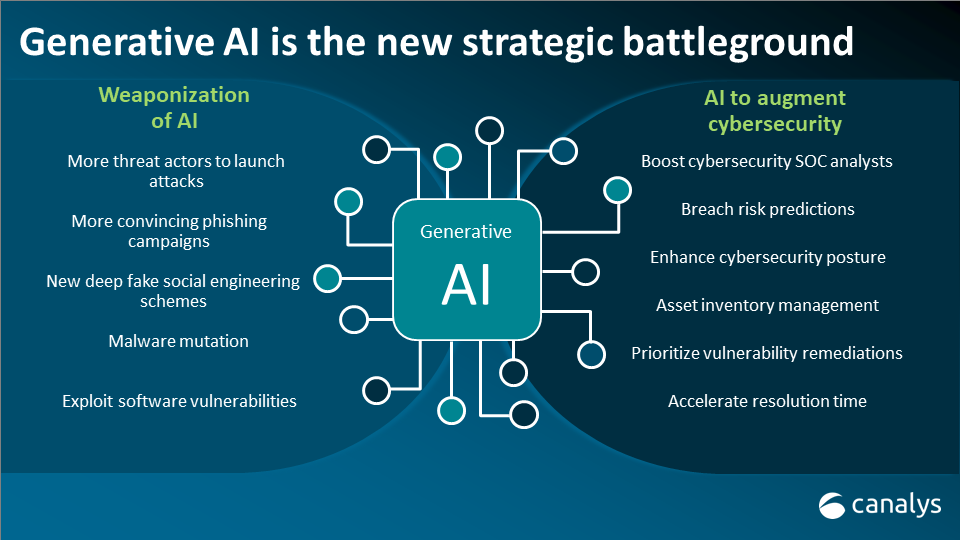In the rapidly evolving landscape of technology, the surge in generative AI applications is reshaping the cybersecurity domain. As we step into 2024, this trend is not only gaining momentum but also bringing to light the increasing challenges organizations face in safeguarding their digital infrastructure. The imperative for privacy professionals and organizations to stay abreast of AI-driven cybersecurity threats has never been more critical.
AI-driven cybersecurity threats on the Rise
The integration of AI and intelligent automation into business operations has significantly enhanced productivity. However, this progress comes with its set of challenges, particularly in the realm of cybersecurity. A noticeable trend is the inverse relationship between the popularity of open-source AI/ML projects and their security robustness. Experts predict that AI will be instrumental in identifying security flaws in code and configurations. Nonetheless, there is a strong caution against over-reliance on AI for autonomous decision-making in security contexts.
Organizations are encouraged to employ AI technology judiciously, using it as a tool to highlight potential risks rather than as the sole decision-maker. This balanced approach is crucial in navigating the complexities of cybersecurity in the AI era.
The escalation of cyber risks
As threat actors turn their focus towards AI systems, the landscape of cybersecurity risks is expected to shift dramatically through 2024. Innovations in AI methodologies are likely to be matched by equally innovative cyber-attacks, exploiting weaknesses and vulnerabilities introduced by these new technologies. The proliferation of unapproved AI tools by employees adds another layer of vulnerability, posing a significant risk to corporate data.
The lack of oversight and understanding of these emerging threat models places an unprecedented strain on security teams. Organizations are thus urged to conduct comprehensive internal reviews to identify both authorized and unauthorized AI infrastructures, assess their risk posture, and develop strategies that prioritize security while maximizing value.
The role of AI in phishing and malware attacks
The use of AI has introduced new complexities to the established threats of phishing and malware. Generative AI tools have empowered cybercriminals to launch highly personalized phishing attacks and sophisticated email campaigns, designed to deceive even the most vigilant individuals. The use of dark web-based AI techniques, including deep-fake technologies and large-scale social engineering, further compounds these risks, undermining trust and manipulating public sentiment.
The dual nature of opportunities and risks presented by AI in 2024 underscores the critical need for organizations to navigate this landscape with caution and strategic foresight. This theme is set to take center stage at Global Privacy Day, happening virtually on January 25, 2024. The event will convene thought leaders and industry professionals to debate the role of AI in the business world and explore strategies for effective data protection and privacy.
One highlight of Global Privacy Day is the “Safeguarding AI Data” session, which aims to clarify common misconceptions about AI data protection and provide practical insights into safeguarding AI-generated data. This session is an essential engagement for anyone interested in the intersection of AI and privacy, offering a deep dive into the practices necessary for effective AI data protection.
As we continue to witness the integration of AI into various facets of business and society, the importance of robust cybersecurity measures has never been more apparent. The trends and challenges outlined here highlight the urgent need for organizations to adapt and reinforce their cyber defenses in the face of evolving AI-driven threats. Global Privacy Day offers a timely platform for discussion and learning, aiming to equip professionals with the knowledge and tools needed to navigate the complexities of AI and cybersecurity.





